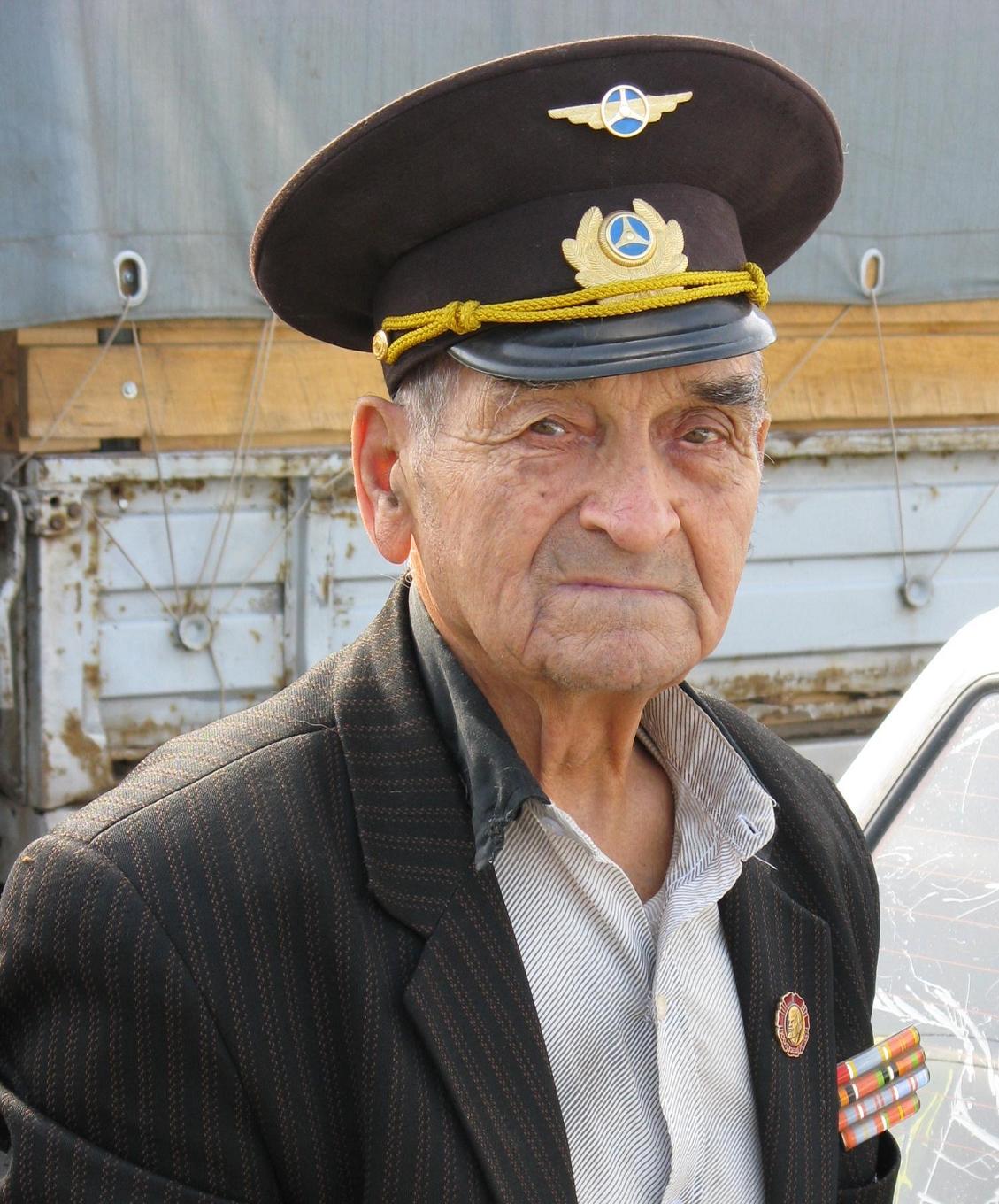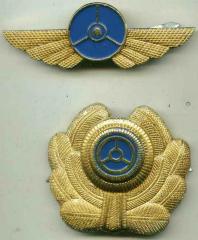 Ministry of Road Transport
Ministry of Road TransportAlthough a USSR Ministry of Road Transport was established at least twice after WWII for short periods of time, for most of the Cold War era each republic established and maintained its own Ministry of Road Transport (with some variation in name). According to regulations, these ministries were responsible for the implementation of centralized freight traffic in cities and industrial centers for industrial enterprises, construction sites, supply, trading and freight forwarding organizations, construction materials industry enterprises, centralized delivery (export) of goods to railways stations, ports (on the pier) and airports, cargo transportation in rural areas, the pickup and distribution of harvested crops, and movement of processed fuel. They were also responsible for road movement of passengers (including taxis and buses - but not rail or streetcars), baggage and mail. The ministries also maintained and provided passenger cars to ministries, departments, enterprises, organizations and institutions for official travel. Interviews with former ministry personnel also indicate they supported military units on occasion, particularly with driver and mechanic support.
Since each republic maintained its own Road Transport Ministry, uniforms also varied from republic to republic. I will address the most important republics below - that of Russia, Ukraine and Belarus. Unfortunately, other republics' uniforms have been very poorly documented and I am unable to definitively describe them.
Minister/Deputy Minister
1978-1985
This highly ornamental cap was worn by the Minister of the Ukrainian SSR Ministry of Road Transport or one of his principle deputies. Like those worn by more junior personnel in this ministry, the crown is in dark blue
blended wool, piping is azure and the band is covered in black velvet. The extent and style of ornamentation, however, are unique to these very senior staff - with all elements done in fine gilt bullion wire.
Both the cockade and wings are embroidered onto appropriately colored backings before being sewn onto the cap. Azure blue felt highlights the center of each. The padded Merchant Marine-type plastic visor is also heavily embroidered - with a rope and oak leaves.
Two general-style buttons cast with the Great Seal of the USSR hold gilt filigree cords in place.
The inside of the cap identifies it was made at the clothing firm associated with the Black Sea Merchant Marine in Odessa in 1981 - which explains the visor composition.
Very Rare
Ministry of Road Transport (Ukrainian SSR)
Drivers
1978-1985
Whereas the previous cap illustrated the pinnacle of rank in the Ukrainian Ministry of Road Transport - this cap was worn by the lowest grade personnel of this ministry.
Both crown and cap are in dark blue cloth, even though regulations called for a black cloth band (black velvet for engineer-technicians and senior officials). However, extensive photography of such caps in use and in collections
make it clear that such black banded caps were seldom encountered. Instead - all blue caps were the norm for lower-ranking personnel. As per regulations, all piping
is in azure (light) blue. The visor is black fiberboard and the chinstrap marking the owner as low-ranking, is black oilcloth. The strap is held in place by two one-piece aluminum buttons
cast with the winged-A symbol of the Ukrainian Ministry of Road Transport. Both emblems were mandated by the 1978 regulations: the one-piece gilt aluminum cockade with the winged-A on a blue-painted background, and
the one-piece winged-steering wheel emblem on the crown. As you will see in the description below - this emblem was actually one of two authorized for wear.
Available
Ministry of Road Transport (Ukrainian SSR)
Drivers
1978-1985
Dated 1981, this is an authorized alternative to the cap described above from the same time period. Once again, notice the use of dark blue for both crown and band. The piping, although by regulation supposed to be
azure blue, is actually a medium blue. Like the band, this was a commonly observed deviation among junior ministry personnel. Since the 1986 regulations reference dark blue piping - it's also possible that
azure was officially eliminated by 1981 but that change has not yet been "discovered." The visor is black plastic and the chinstrap is black oilcloth.
Also like the cap above, the buttons are one-piece gilt aluminum with the winged-A design. The cockade is the same but the emblem on the crown centers around a white A on a blue background, instead of the steering wheel.
As mentioned, both of these wings were worn interchangeably during this period.
Available
Ministry of Road Transport (Ukrainian SSR)
Drivers/Line Personnel
1986-1991
Even though dark blue remained the standard for Road Transport Ministry uniforms in 1986, piping color and emblems were changed in new regulations published that year.
As in the 1978 regulations, cap bands were to be in black wool for junior personnel (velvet for seniors and engineers)
although dark blue was more often substituted. Piping color was officially changed from azure to "dark blue;" a color which varied in shade from medium to dark.
This cap has a black lacquered visor (rather rare in such a late cap) and an oilcloth strap held by two gilt winged-A embossed buttons. Both cockade and crown emblems were significantly changed from 1978.
The cockade now came in two versions: the simple fluted gilt oval shown here with blue and red painted background for junior personnel - and a version where the oval cockade was surrounded by a wreath for senior and highest-grade officials.
Those higher ranks would have also worn gilt filigree cords instead of the chinstrap. The crown emblem was now standardized on a single, more streamlined design shown here. This is actually a wire-embroidery version which would normally
have been worn by more senior personnel. A stamped aluminum version was more often worn by drivers and other rank and file.
Scarce
Ministry of Road Transport (RSFSR)
Drivers/Mechanics
1969-1978
Dark brown was an uncommon Soviet uniform color which by itself makes this an interesting cap. According to Russian sources, it was part of a brown uniform worn by drivers and other personnel of the Russian Soviet Federated Socialist Republic (RSFSR) Ministry of Road Transport during the period 1969-1978. After 1978, it was replaced by the dark blue uniform cap discussed below.
The crown and band are assembled from a brown polyester type fabric, another very unusual feature of this 1977-dated cap. The visor and chinstrap are black plastic and the two-piece metal buttons are embossed with the symbol
of the Russian Road Transport Ministry - a stylized steering wheel. Yet another oddity is that no cockade is worn on the band, with only an aluminum winged-steering wheel emblem pinned to the crown.
There is one photograph which shows this cap being worn - apparently by a retired worker - with M1979 RSFSR road transport cockade/emblems, but these would have had to been added after this uniform was officially superseded.

Rare
Ministry of Road Transport (RSFSR)
Engineer-Technicians
1979-1991
After 1978, the Russian Road Transport Ministry adopted uniforms very similar to those already discussed for Ukraine, as
dark blue replaced the earlier dark brown. Cap crowns were sewn from the same dark blue cloth and piping was to be azure. Although the piping on this 1990-dated
cap is more cornflower blue, that appears to have been an acceptable shade variation. The band for drivers and line personnel was apparently the same dark blue as the crown (regulations merely mention a dark blue cap), but
engineer-technicians (and presumably senior officials) were authorized black velvet bands as shown here. Gilt filigree cords were also prescribed for these personnel instead of black chinstraps.
All personnel were authorized the same cap emblems as shown here: a wreathed and blue background colored steering wheel as the cockade and a winged
steering wheel also with a blue background for the crown emblem. The steering-wheel embossed buttons used on the brown cap above were still authorized for these later caps although this
cap has railroad buttons, probably due to availability issues during the cap's manufacture.
Scarce
Ministry of Road Transport (RSFSR)
Taxi Driver
1970s
A very "non-Soviet" looking cap - this was worn by Taxi drivers in Moscow and Leningrad for a short time in the 1970s (after 1972). According to Russian sources, the caps were introduced to give a "more modern" western look to taxi drivers (especially those operating out of the international airports) to make tourists feel more at home. They were not apparently very well received and did not last long in service.
The cap does look somewhat like that of a New York City's policeman! The black crown is gathered into eight "points" along its circumference. The band is covered by a black ribbon like that of the Navy's. The black chinstrap is standard military style and is held by two plain black plastic buttons.
There were at least two color variations of the associated taxi driver cockade: in this case, a red "T" is superimposed on a white circle. A white "T" on a blue circle also existed.
Scarce
